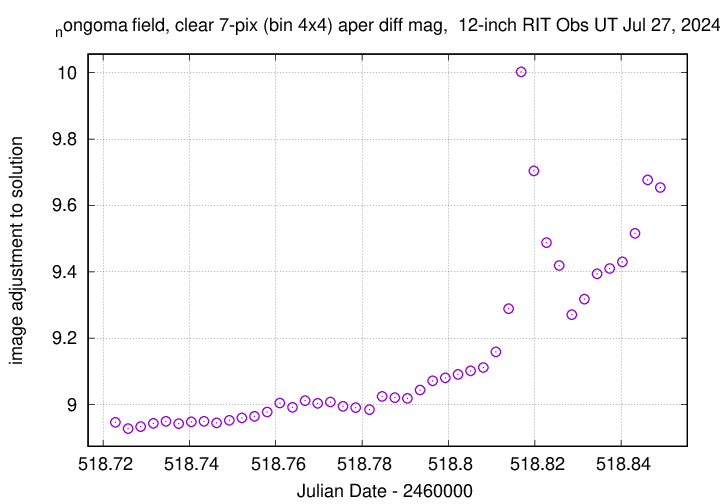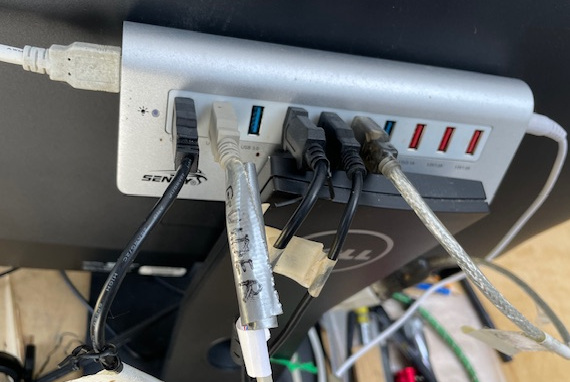
On the night of Jul 26/27, 2024, under good conditions, I acquired images of the recurrent nova T CrB. This star undergoes outbursts at long intervals of 80 years or so. Its next outburst is predicted to occur soon, perhaps in 2024, and so I've joined the crowd who are monitoring it.
T CrB is still in quiescence, at V = 10.00 this evening. It does seem to be creeping up very slowly in brightness.
This recurrent nova brightens from by about 8 magnitudes (!), from V = 10 to about V = 2, around every 80 years. Will we see another outburst this summer?
These observations involved:
Notes from the night:
Old hub, replaced earlier this afternoon:

New hub, put into place this afternoon:
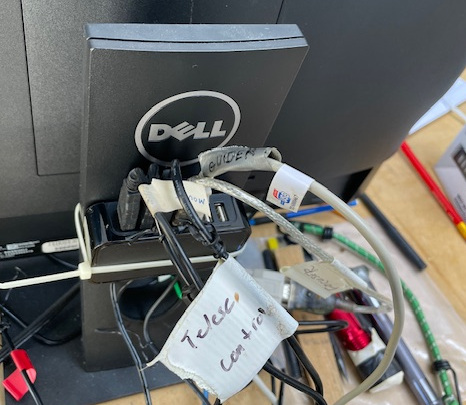
The picture below shows a cropped image of the field of T CrB from Jun 14/15, 2024. The field of view is about 20 arcminutes across.
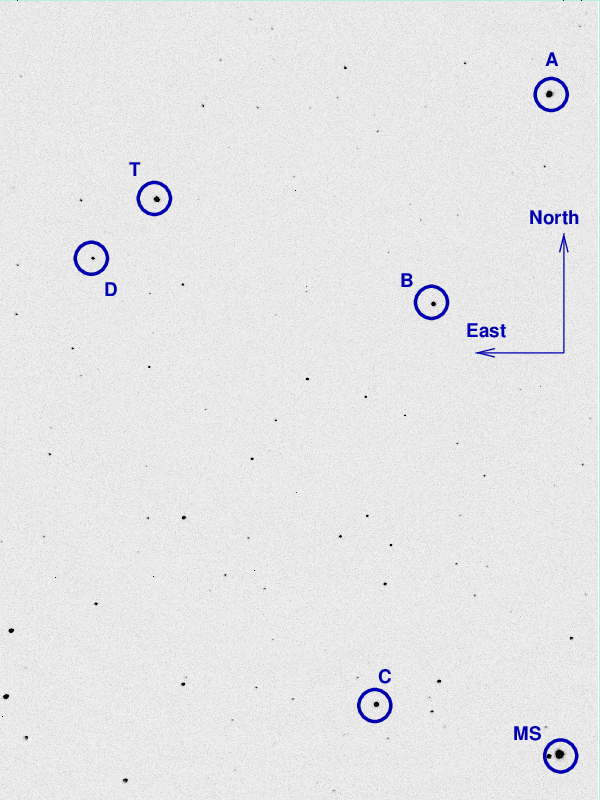
I've marked the location of several comparison stars, with magnitudes and names taken from the AAVSO's chart.
star name B V
------------------------------------------------------
A 000-BJS-901 11.190 10.566
B 000-BBW-805 11.840 11.187
C 000-BPC-198 13.049 12.336
--------------------------------------------------------------------------
When the target is centered, the finder TV shows this field:
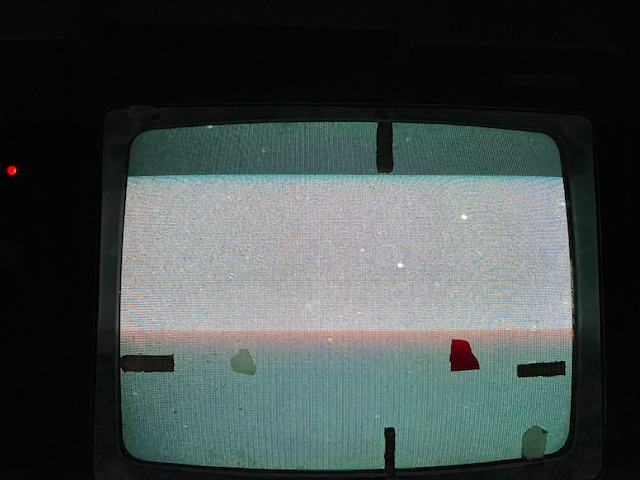
Here's the sky background over the course of the run. It's smooth, so no significant clouds -- but I'm pretty sure there was a lot of haze.
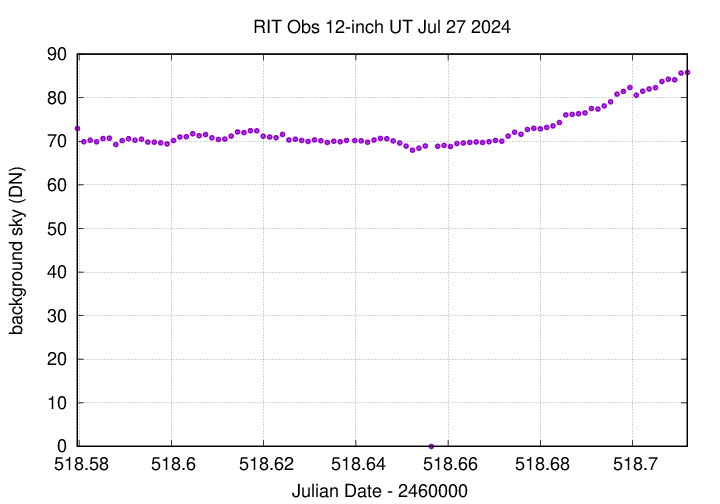
The FWHM was pretty steady. I noted turbulence early in the evening.
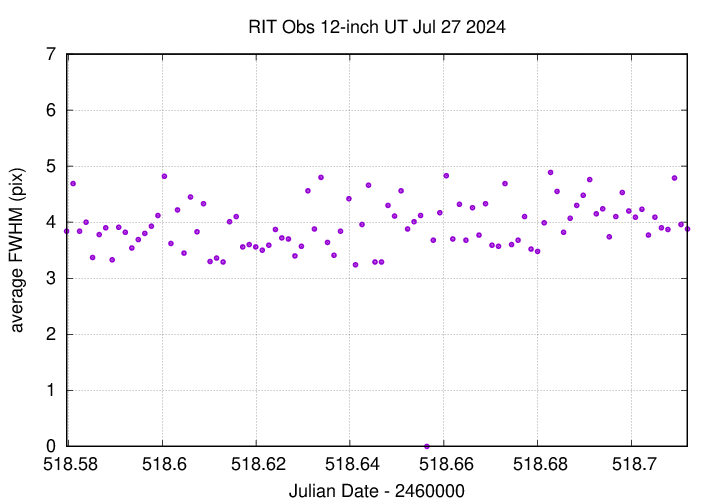
The graph below shows changes in the photometric zeropoint of an ensemble solution of the instrumental magnitudes over the course of the run. Typical increase as the airmass increased.
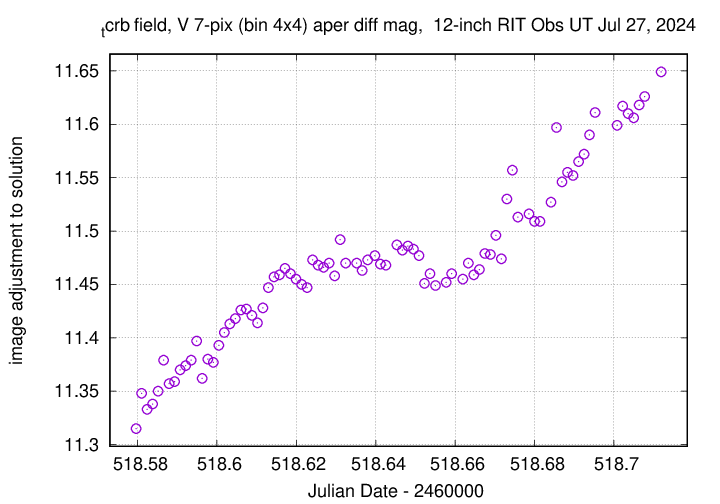
Using aperture photometry with a radius of 7 pixels in V filter (binned 4x4, each pixel is 1.036 arcsec, so a radius of 7.3 arcsec), and 7 pixels in B filter (binned 4x4, each pixel is 1.036 arcsec, so a radius of 7.3 arcsec), I measured the instrumental magnitudes of a number of reference stars and the target. Following the procedures outlined by Kent Honeycutt's article on inhomogeneous ensemble photometry, I used all stars available in each image to define a reference frame, and measured each star against this frame.
Sigma-vs-mag plots show that the floor in V-band was about 0.005 mag, which is okay, In B-band, it was 0.006.
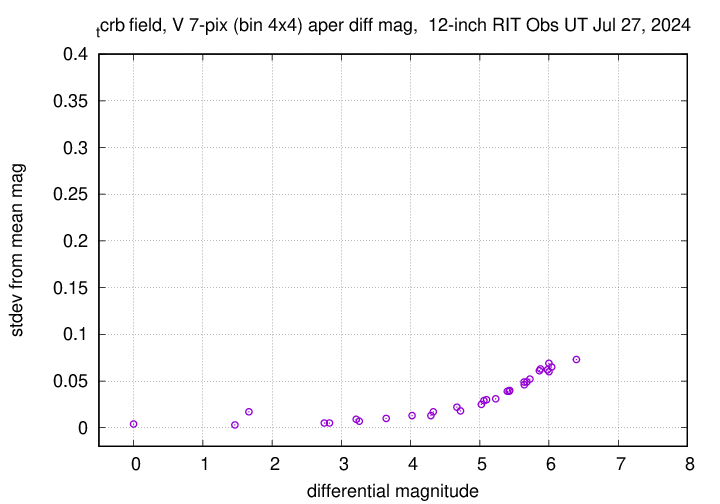
The measurements show relatively steady brightness, with a couple of tiny, brief bumps in B-band.
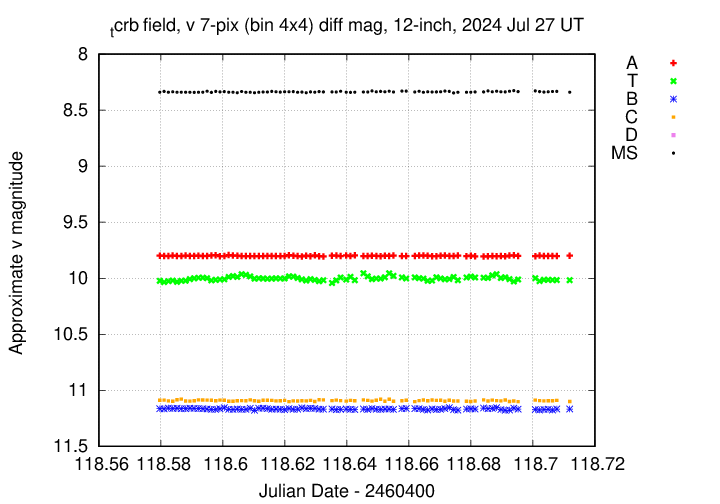
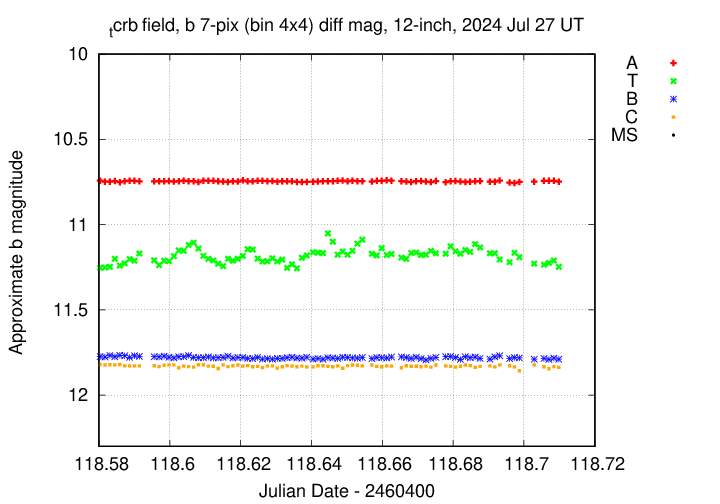
I've submitted these measurements to the AAVSO.
Not much is known about this asteroid. A set of seven nights of measurements of its light curves -- see Wisniewski, W. Z., et al., Icarus, 126, 395 (1997) -- suggests a period longer than one day, with short-term variations up to 0.2 mag.
A colleague mentioned that he might be preparing a campaign to try to pin down the rotation period, but the object is pretty faint: its V magnitude is around 15.5. Could I contribute? I have been taking measurements when I can to help out.
These observations involved:
On this night, the object was near position
RA = 20:57:57.1 Dec = +12:08:51 (J2000)
I observed for a bit more than three hours, in good conditions.
Here's the sky during the observations. It looks as if cirrus started covering the sky in the middle of the run.

The ensemble zero-point adjustment factor shows the same evidence for light clouds late in the run.
